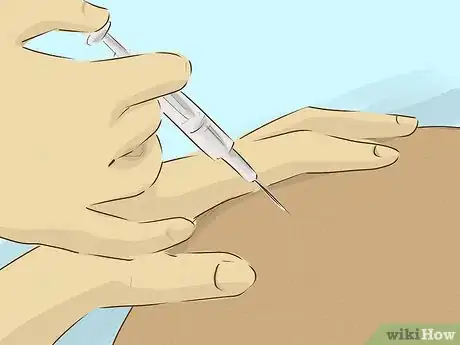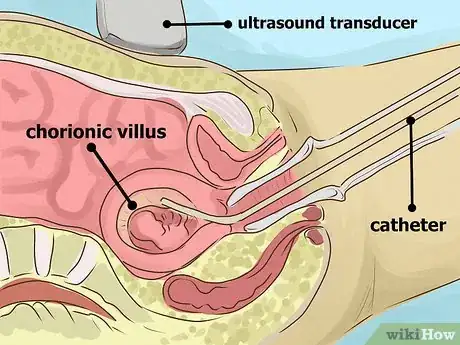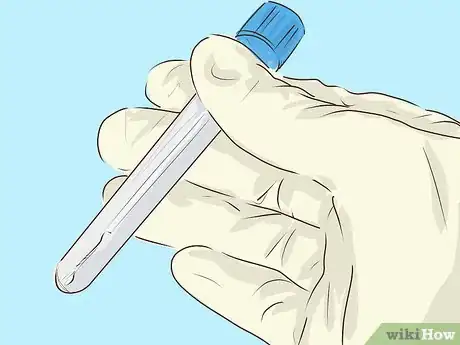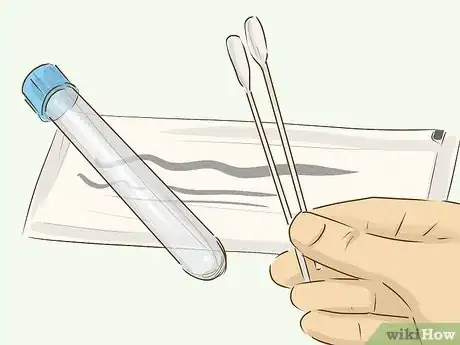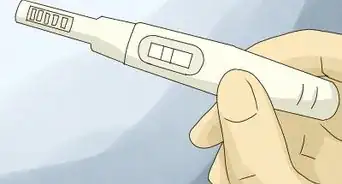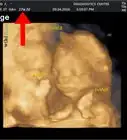This article was co-authored by wikiHow Staff. Our trained team of editors and researchers validate articles for accuracy and comprehensiveness. wikiHow's Content Management Team carefully monitors the work from our editorial staff to ensure that each article is backed by trusted research and meets our high quality standards.
There are 11 references cited in this article, which can be found at the bottom of the page.
This article has been viewed 145,781 times.
Learn more...
Doubts about a child's paternity can be stressful. It may cause problems for you, the child, your family, your significant other and possibly other partners you’ve had. But rest assured, you can easily and quickly figure out who the father of your child is. You can tell if the child is really his by getting prenatal testing or undergoing postnatal tests.
Steps
Getting Prenatal Tests
-
1Have the NIPP test. Ask your doctor to test your blood and the potential father’s with the Non-Invasive Prenatal Paternity, or NIPP. Let your doctor collect the sample anytime after your 8th week of pregnancy, which ensures that the test can detect the baby’s DNA in your blood.[1]
- NIPP has a 99.9% accuracy rate.
-
2Get an amniocentesis. Talk to your doctor about undergoing an amniocentesis, which is a procedure where a small sample of amniotic fluid is removed from your uterus with a needle.[2] You’ll need their consent to undergo the procedure because it comes with potential risks including miscarriage. Have your doctor perform an amniocentesis in your second trimester, between the 14th and 20th weeks of pregnancy.[3]
- Amniocentesis comes with the follow risks: leaking amniotic fluid, miscarriage, needle injury, the baby’s blood cells entering your bloodstream (rare), and infection.
Advertisement -
3Test placental tissue with chorionic villus sampling. If you are concerned about the risks of amniocentesis, ask your doctor to perform chorionic villus sampling, or CVS, to establish the child’s father. Have CVS, which involves taking a small sample from the baby’s placenta, between your 11th and 13th week of pregnancy.[4] Talk to your doctor about the best way to collect the CVS for you, either through the vagina with a speculum or through your abdomen with a small needle. Check on your lab results within 7-10 days.[5]
- A chorionic villus is a tiny part of the placenta formed from the fertilized egg, so it usually has the same DNA as the fetus.
- Rare risk factors for CVS include: miscarriage and limb deformities in an infant.
Undergoing Postnatal Testing
-
1Use the buccal swab test. Talk to your doctor or medical professional about using a buccal, or cheek, swab test to confirm if he is really the child’s father. Have the test performed at a medical lab where an assistant can help you. Gently rub the inside of your cheek, the baby’s cheek, and the potential father’s cheek with the provided cotton swab. Then give them to the lab attendant and await the results.[6]
- Buccal swabs can cost up to $1000.
- Consider using the buccal swab because it is the least invasive form of paternity testing for all parties. Buccal swabs have the same accuracy as blood tests.
-
2Use a commercial swab test. Visit your local pharmacy and ask the pharmacist about over-the-counter cheek swab DNA testing kits. Follow the package instructions and take a sample from yourself and your child. Ask the potential father(s) to provide you a sample on the prepackaged swab. Then send in the swabs to the designated lab and wait for your results.
-
3Collect cord blood to establish paternity. Speak to your obstetrician about testing your baby’s cord blood to tell if the child is really his. Let them you that you and the potential father will provide blood samples before you go into labor. Permit them to take a small blood sample from the umbilical cord at your baby’s birth to confirm paternity.[7]
- Cord blood testing can be expensive than other types of postnatal testing.
-
4Consider hair testing. If you can’t get a cheek or blood sample, collect hairs from the potential father. Ask him to give you 5-10 hair bulbs with visible follicles so the lab can extract enough DNA to let you know if he’s the father. Be aware that hair testing is a lot less accurate than other types of DNA testing. You may only want to use this if nothing else works.
Dealing with Paternity Testing
-
1Ask the potential father for a sample. Invite your child’s potential father to sit with you in a neutral place, such as a restaurant or park. Tell them that you would like to have a paternity test and explain the reasons why you think they may be the father. Avoid using language that is insulting or offensive, which may make it more difficult to get a blood, hair, or other DNA sample.[8]
- For example, “Hi Sam, I know things haven’t been easy with us, but could you please meet me at our local coffee shop for a few minutes. I know we slipped up and had sex and I’m wondering if you might be the baby’s father instead of Chris. I just want to talk to you about the possibility of getting a DNA sample from you to confirm whose baby I’m having. I understand that this may be difficult for you. Please take any time you need to make your decision on the meeting.”
-
2Talk to your child about the paternity test. If you’re going through paternity testing, set aside some time to talk to your child if they are older than 4 or 5. Let them know that they’ll be getting a test to figure out some stuff about their health. Make sure to keep the language commensurate with the child’s age and use words that won’t scare them. This may make it easier to get the sample from your child and discuss who their father is with them following the test.[9]
- For example, “Ari we’re going to go to the doctor today and have a test. You don’t have to worry, it won’t hurt and will take one second. The test is just going to give us information about your daddy and your health that we can use to keep you healthy and happy in the future.”
-
3Welcome support from friends and family. Figuring out if he’s the father of your child is probably stressful for you. Talk to your close friends and family members about your feelings on the situation. Ask for suggestions about how best to handle situations you may confront as you tell if he’s the father. Let them help you out as much as they can, such as watching your child while you meet with him.
-
4Seek professional counseling. As a part of your testing, or even if you’re considering it, meet with a professional counselor regularly. Discuss your feelings and concerns with the testing and the implications of determining who the father of your child is. Having a neutral and outside opinion can help you better deal with the emotional aspects of telling if the child is really his.[10]
Warnings
- If possible, choose non-invasive paternity testing or wait until after a child’s birth to see if the child is really his. This can minimize the risk of side effects, including miscarriage, from invasive procedures such as amniocentesis and CVS.[11]⧼thumbs_response⧽
- Use a laboratory or test accredited by the American Association of Blood Banks to ensure the most accurate results.[12]⧼thumbs_response⧽
References
- ↑ https://americanpregnancy.org/paternity-tests/non-invasive-prenatal-paternity-test/
- ↑ http://www.mayoclinic.org/tests-procedures/amniocentesis/basics/definition/prc-20014529
- ↑ https://my.clevelandclinic.org/health/diagnostics/10119-dna-paternity-test
- ↑ https://my.clevelandclinic.org/health/articles/dna-paternity-test
- ↑ https://my.clevelandclinic.org/health/articles/chorionic-villus-sampling-for-prenatal-diagnosis
- ↑ https://my.clevelandclinic.org/health/articles/dna-paternity-test
- ↑ http://www.babymed.com/pregnancy/paternity-testing-and-cord-blood
- ↑ https://dnatesting.com/how-to-ask-a-partner-for-a-paternity-test/
- ↑ https://dnatesting.com/whos-my-daddy-talking-to-a-child-about-paternity-testing-your-survey-results/

